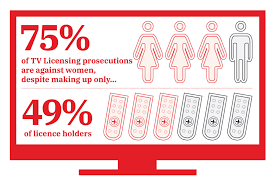All You Need to Know About TV Licence in the UK

Introduction
The TV licence is a crucial aspect of broadcasting in the UK, allowing the BBC and other public service broadcasters to operate without direct government funding. It ensures the availability of quality content and supports a diverse range of programming. As the landscape of media consumption continues to evolve, understanding the relevance and implications of the TV licence is more important than ever.
What is a TV Licence?
A TV licence is a legal requirement for anyone in the UK who watches live television broadcasts or uses the BBC iPlayer service. The annual fee, currently set at £159 for a colour licence and £53.50 for a black and white licence, contributes to funding the BBC’s services, including television, radio, and online content. The licence fee is integral in maintaining the independence and impartiality of the BBC.
Recent Developments
In 2023, discussions about the future of the TV licence have intensified, particularly in light of changing viewing habits and the rise of subscription-based streaming services. A recent report indicated that more households are opting for on-demand services such as Netflix, Amazon Prime, and others, often leading to a decline in traditional live TV viewership. The BBC has faced scrutiny as discussions about potential reforms to the licence fee model arise, with some advocating for a subscription-based approach similar to other media outlets.
Consequences of Non-Payment
Failure to pay for a TV licence can lead to significant penalties, including fines of up to £1,000. Enforcement measures include court proceedings and, in some cases, the use of detection equipment to identify unlicensed viewers. The importance of compliance extends beyond just avoiding fines; it underscores the collective responsibility of viewers to support public broadcasting.
Conclusion
As the debate surrounding the future of the TV licence unfolds, it remains essential for UK residents to stay informed about their obligations and the implications of any potential changes. The outcome of these discussions could reshape the funding model for public broadcasting, impacting the availability and quality of content in the future. As viewing habits change, the challenge lies in balancing the preservation of public service broadcasting with the realities of modern media consumption.









